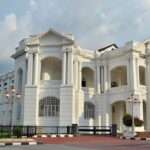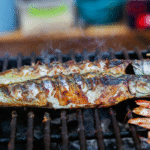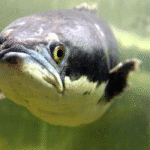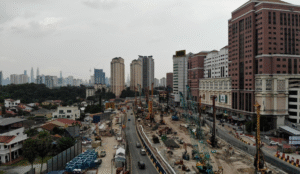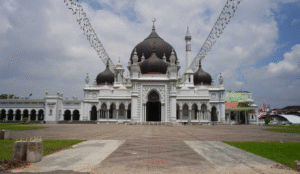Exploring Labuan: Malaysia’s Duty-Free Island Travel Guide
Have you ever heard of a place where you can shop duty-free, dive into wrecks, peek into wartime history, and relax on uncrowded tropical beaches — all in one compact island? Welcome to east Malaysia — Malaysia’s remarkable duty-free island tucked off the coast of Borneo.
In this travel guide, I’ll take you on a journey through the island’s hidden charms: what to see, where to eat, how to get around, and how to make the most of Labuan duty-free shopping. You’ll also discover the top attractions and things to do in Labuan so that your next getaway feels effortless, personal, and unforgettable.
Frequently Asked Questions (FAQ)
1. Is Labuan a duty-free island?
Yes. They enjoyed duty-free status since 1956, meaning visitors can buy items like alcohol, tobacco, chocolates, and certain imported goods at prices much lower than on the Malaysian mainland.
2. Which islands are duty-free in Malaysia?
Besides Labuan, other Malaysian duty-free islands include Langkawi in Kedah and Tioman in Pahang. These destinations also allow travelers to purchase a variety of goods without import duties, though each island sets its own limits and customs allowances.
3. Is the Labuan company considered a Malaysian company?
The company is incorporated under the Labuan Companies Act and regulated by the Labuan Financial Services Authority (Labuan FSA). While it benefits from Labuan’s special tax regime, it is still legally a Malaysian company and enjoys Malaysia’s double-tax treaties and legal protections.
4. Is Labuan still tax free?
This Malaysia isle maintains a preferential tax framework. For trading activities, companies can elect to pay a 3 % tax on net audited profits or a fixed MYR 20,000 annually. Non-trading (investment-holding) entities are exempt from tax altogether. Personal income tax for residents follows standard Malaysian rates.
5.Is Labuan under Malaysia?
Yes. This island is one of the three Federal Territories of Malaysia (along with Kuala Lumpur and Putrajaya). It is governed directly by the federal government rather than by the state of Sabah, even though it lies just off Sabah’s coast.
Getting to Labuan & First Impressions
Where is Labuan, Malaysia?
This island is a Federal Territory of Malaysia, made up of one main island and six smaller ones. It lies off the coast of Sabah, facing Brunei Bay, and plays a unique role as a quiet island outpost with strategic maritime history.
The island is just 92 km², yet it has deep-water port facilities, a duty-free status, and a mix of colonial and wartime relics that reveal its layered past.
How to Reach to this island:
There are two primary ways to reach here:
- By air: Labuan International Airport connects to major Malaysian cities like Kuala Lumpur, Kota Kinabalu, and Brunei.
- By ferry/boat: You can take a ferry from Kota Kinabalu (approx. 90 minutes), or boat services from Brunei (Muara), sometimes via Menumbok (Sabah) to this island.
If you arrive by ferry, make sure to leave extra time for immigration and ticketing, especially on weekend crossings.
Once you touch down (by air or sea), the relaxed pace and tropical air will immediately tell you: this is not your typical tourist hub.
Best Time to Visit & Practical Tips
Ideal Seasons & Weather
This duty-free island enjoys a tropical climate, typically hot and humid all year. The rainy season is more intense from October to November, so many travelers prefer March–September for drier conditions.
Sunsets here are spectacular, and days can get quite warm by midday—pack sunscreen, a hat, and lightweight clothing.
Currency, Language & Essentials
- Currency: Malaysian Ringgit (MYR).
- Language: Bahasa Malaysia is widely spoken; English is commonly understood in tourist areas.
- Connectivity: Local SIMs are available; WiFi is common in accommodations.
- Transport: Rent a car or a motorbike to explore freely. Public minibuses operate but on unscheduled circuits.
Attractions & Things to Do in Labuan
Here’s a structured itinerary to help you experience the best of this coastal haven.
Day 1: History, Heritage & Scenic Walks
The Chimney Museum & Tanjung Kubong Trail
One of Labuan’s iconic landmarks is the Chimney Museum. Built in the early 1900s, the red brick chimney is said to be linked to former coal mining operations under British North Borneo rule.
From the museum, you can embark on the Tanjung Kubong Chimney Trail — a scenic walk that leads you along coastline paths, through remnants of wartime structures, and toward viewpoints overlooking the sea.
This route is moderately easy and lets you soak in both nature and history.
Peace Park & Surrender Point
Not far from the coastline lies Peace Park, built as a memorial to peace and reconciliation after World War II. Adjacent is Surrender Point, the site where Japanese forces surrendered to Allied forces in 1945.
The park also offers beautiful views of Layang-Layang Beach, ideal for walking at golden hour.
Labuan Clock Tower
In the heart of Victoria Town (Labuan’s main settlement), the Labuan Clock Tower stands as a replica of the pre-World War II tower built in 1906, in honor of philanthropist Chee Swee Cheng. Its reconstruction in 2002 restored a piece of colonial charm to the central streets.
Labuan Museum
To appreciate this coastal haven deeper heritage, the Labuan Museum offers exhibits from prehistory and early settlement, through colonial times to modern status as a federal territory. It is housed in a colonial-era building that once served as government offices.
Day 2: Marine Life, Diving & Island Excursions
Marine Museum / Maritime Museum
Located within the International Sea Sports Complex, the Labuan Marine Museum showcases marine biodiversity, specimens, diving gear, wreck information, and coral exhibits. Entry is free and it runs from about 9 a.m. to 6 p.m.
This is a good stop either before or after boat or dive tours — it gives context for what you’ll see underwater.
Wreck Diving & Snorkeling
This Malaysia isle is a hidden gem for scuba divers. Several wreck dive sites lie south of this island in Brunei Bay, remnants of World War II and later maritime incidents. Exploring these artificial reefs offers a unique combination of history and underwater biodiversity.
If diving isn’t your thing, many operators offer snorkeling trips to nearby reefs around the smaller islets.
Island Hopping (Pulau Papan, Kuraman, Rusukan)
Excursions to the nearby islets are among the best things to do in Labuan. Some examples:
- Pulau Papan: The closest, developed island, perfect for a daytime trip (~15 minutes by speedboat) to swim, relax, and explore.
- Pulau Kuraman: Known for long sand spits, forest trails, turtle nesting and wrecks in the surrounding waters.
- Rusukan (Besar/Kecil): Part of the Marine Park in this island, ideal for snorkeling or just a serene beach day.
You’ll need a permit from the tourist information center for some private islets.
Day 3: Cultural Villages, Markets, & Island Life
Kampung Patau-Patau (Water Village)
One of the most unique attractions is the water village of Patau-Patau. Residents live in stilt houses over water, with walkways connecting homes — a living museum of coastal Malay culture.
A stroll through here offers insight into daily life, traditional fishing crafts, and local community rhythms.
Commonwealth War Cemetery
This peaceful site honors soldiers from India, Australia, and other Commonwealth forces who died during the Borneo campaign in World War II. The well-kept grounds and gravestones are deeply moving and provide a somber contrast to the island’s more leisurely attractions.
Sikh Temple (Gurdwara Sahib)
Among religious diversity, the Sikh community’s temple offers a spiritual stop that is less visited by tourists but charming and serene.
Local Markets & Downtown Walks
This island’s downtown (Victoria) is compact and easy to explore on foot. Grab local cendol, kolomee, or snacks from street stalls. Visit the Central Market (Pasar Sentral) and smaller weekend markets to browse souvenirs and local produce.
Labuan Duty-Free Shopping: How to Maximize It
One of the most compelling reasons travelers visit this haven is Labuan duty-free shopping. The island’s duty-free license means that alcohol, tobacco, cosmetics, perfumes, electronics, and selected imported goods are significantly discounted compared to the mainland.
Shopping Zones & Top Spots
- Financial Park Shopping Complex: A major hub for duty-free goods — perfumes, chocolates, electronics, liquor, cosmetics.
- Jalan OKK Awang Besar: Known for retail outlets and shops stocking fabrics, souvenirs, and daily goods.
- Open-air weekend markets: On Saturdays/Sundays, stalls offer handicrafts, local snacks, and gifts.
Tips for Smart Shopping
Compare multiple vendors — different shops may price differently for the same item.
Check authenticity — look for genuine packaging, serial numbers, warranties.
Know your limits — depending on your home country, check customs/duty allowances for alcohol or goods you bring back.
Shop early or late — peak midday hours may mean crowded stores, while late afternoon is more relaxed.
Carry cash — although many stores accept cards, some small stalls may be cash-only.
Because of the duty-free appeal is often a centerpiece of travel itineraries, and for many visitors, the bargains alone justify the journey.
Sample 3-Day Itinerary (Flexible)
Day | Morning | Afternoon | Evening |
Day 1 | Arrive & settle, visit Labuan Museum & Clock Tower | Chimney Museum + Tanjung Kubong Trail | Peace Park, Surrender Point, Layang-Layang sunset |
Day 2 | Marine Museum visit, lunch | Island hopping (Pulau Papan, Kuraman) or diving | Back to Victoria, enjoy the waterfront night |
Day 3 | Kampung Patau-Patau, Sikh temple | War Cemetery, downtown market stroll | Last-minute duty-free shopping, depart |
This flow lets you balance heritage, nature, marine life, and shopping without rushing.
Where to Stay & Where to Eat
Accommodation Options
This destination has lodging options for many budgets — waterfront resorts, midrange hotels, or simple guesthouses. The key is to stay somewhere central (Victoria) or close to the coast for easier access to boat departures.
Food & Dining
- Seafood & local fare: Try fresh seafood at local family-run restaurants. Many visitors marvel at how cheap crab or fish can be.
- Cafés & dessert stalls: Don’t miss the nostalgic Cincau Ah Ming — an iconic local drink stall over 50 years old.
- Comfort cafés: Theobroma Bake Lab is a cozy café known for its pastries and relaxing ambience.
- Night markets & street food: In the evening, try keropok (fish crackers), nasi goreng, grilled seafood, or local desserts along the waterfront promenade.
Extra Stay & Eat Ideas
For travelers craving more variety, consider homestays in smaller coastal villages, where families offer simple rooms and hearty home-cooked meals. Boutique villas near Batu Manikar Beach provide private pools and ocean views, while budget explorers can rent bicycles from guesthouses in Kampung Layang-Layang for easy beach hopping. Foodies should hunt down early-morning roti canai at roadside mamak stalls, savor spicy laksa Labuan for lunch, and spend evenings at the bustling night market sampling grilled squid and colorful kuih desserts. International flavors abound too—Italian trattorias, Japanese sushi bars, and fusion cafés showcase the island’s multicultural palate.
Insider Tips & Lesser-Known Gems
- Travel lightly: Bring only what you can comfortably carry, since moving between islets and beaches often involves boats and walking.
- Start early: For trails, island hopping, or diving, set off early to avoid midday heat and afternoon storms.
- Permits & info: For some private islands, you’ll need permits. Visit the tourism center near Labuan Square for permissions and local maps.
- Mix free and paid: Many attractions (museums, war cemetery, Clock Tower) are free or low cost. Balance them with diving or island tours which cost more.
- Mind your sun & mosquitoes: Always carry sunscreen, insect repellent, and maybe long sleeves for dusk.
- Local festivals & events: Check the Labuan tourism board schedule before your visit — you might catch local festivals, seafood fairs, or cultural performances.
- Combine with Brunei or Sabah: Labuan’s strategic location allows you to hop to Brunei or Sabah easily if your schedule allows.
What Makes Labuan Unique?
Compact diversity: In a small area, you can traverse history, nature, marine ecosystems, and shopping.
Duty-free edge: Few places in Malaysia offer such broad duty-free benefits reliably.
Off-beat charm: Unlike more famous Malaysian islands, this island enjoys fewer crowds and a more authentic pace.
Deep history: From Brunei rule, British coal mining, wartime occupation, surrender events, to modern federal territory — this coastal haven layers offer stories on every corner.
More Reasons It Stands Out
This island also shines as a cultural crossroads. Malay, Chinese, Kadazan-Dusun, and expatriate communities’ live side by side, celebrating festivals like Hari Raya, Chinese New Year, and Pesta Kaamatan with equal enthusiasm. Visitors are often invited to join, sampling music, dance, and traditional dishes. Nature lovers can kayak through mangroves alive with birdlife or photograph dramatic sunsets over the South China Sea. Despite its modern role as a financial hub, the island retains a relaxed village vibe, with friendly locals and uncrowded beaches. The ease of getting here—daily flights and regular ferries—means you can enjoy both convenience and serenity, a combination rare in Southeast Asian Island destinations.
This combination makes Labuan Malaysia more than a stopover — it can be a destination in its own right.
Conclusion & Travel Call-to-Action
This island may be small, but it’s mighty. Whether you’re drawn by Labuan duty-free shopping, eager to dive along shipwrecks, or hungry to wander through heritage sites and island trails, this quiet enclave holds surprises at every turn.
If you’ve been planning your next Malaysia getaway, don’t skip this unsung gem. Use this travel guide to map your route but leave space for spontaneity — some of the most memorable moments in this Malaysia isle happen when you wander off the itinerary.
Ready to explore? Start drafting your travel dates, check flight or ferry schedules, and bookmark this guide. Let this coastal haven surprise you.
Posts you might be interested
-
 Best Heritage Hotels in Malaysia/0 Comments
Best Heritage Hotels in Malaysia/0 Comments -

-

